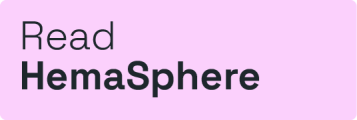Search
Open Access: the ‘Plan S’
Research and academic groundwork funded with public means should be free and open to everyone. That is the principle behind Open Access that was formulated in 2003 in the Berlin Declaration.
Lighting the Flame program phases
A full guide to what our Lighting the Flame program involves, including dates of upcoming online workshops and in-person retreats.
Read moreLighting the Flame Journal Club
A learning and connecting hematology experience led by alumni of the Lighting the Flame program. The Lighting the Flame Journal Club is an online group that's open to all members of the Lighting the Flame community.
Read morePress Release: “Building the knowledge economy in the world of blood diseases: patients, professionals and Parliamentarians help make the new Europe.”
Brussels, 29th August 2011
On the 30th & 31st of August a conference will be hosted in the European Parliament that will demonstrate the leading role haematology will have in securing the future knowledge economy envisaged in the Europe 2020 Strategy.…
HARMONY: Innovative Medicines Initiative approves € 40 million project for better care of patients with hematologic malignancies
HARMONY will capture, integrate, analyze and harmonize anonymous patient data from high-quality multidisciplinary sources to unlock valuable knowledge on multiple myeloma (MM), acute myeloid leukemia (AML), acute lymphoblastic leukemia (ALL), chronic lymphocytic leukemia (CLL), non-Hodgkins lymphoma (NHL), myelodysplastic syndromes (MDS)…
Read moreCollaboration with the EMA on Joint Clinical Assessments and Joint Scientific Consultations under the HTA Regulation
The European Hematology Association (EHA) welcomes the draft Implementing Act laying down procedural rules for the exchange of information between the Health Technology Assessment (HTA) Coordination Group, the European Commission, and the European Medicines Agency (EMA).
Read moreThe past and future of the EU Blood, Tissues and Cells legislation
Photo credit: Ineke Oostveen
Blood, tissues and cells (BTC) are used in medicine and in hematology on a daily basis.
- «
- 1
- 2
- 3
- 4
- 5
- 6
- 7
- 8
- 9
- 10
- 11
- 12
- 13
- 14
- 15
- 16
- 17
- 18
- 19
- 20
- 21
- 22
- 23
- 24
- 25
- 26
- 27
- 28
- 29
- 30
- 31
- 32
- 33
- 34
- 35
- 36
- 37
- 38
- 39
- 40
- 41
- 42
- 43
- 44
- 45
- 46
- 47
- 48
- 49
- 50
- 51
- 52
- 53
- 54
- 55
- 56
- 57
- 58
- 59
- 60
- 61
- 62
- 63
- 64
- 65
- 66
- 67
- 68
- 69
- 70
- 71
- 72
- 73
- 74
- 75
- 76
- 77
- 78
- 79
- 80
- 81
- 82
- 83
- 84
- 85
- 86
- 87
- 88
- 89
- 90
- 91
- 92
- 93
- 94
- 95
- 96
- 97
- 98
- 99
- 100
- 101
- 102
- 103
- 104
- 105
- 106
- 107
- 108
- 109
- 110
- 111
- 112
- 113
- 114
- 115
- 116
- 117
- 118
- 119
- 120
- 121
- 122
- 123
- 124
- 125
- 126
- 127
- 128
- 129
- 130
- 131
- 132
- 133
- 134
- 135
- 136
- 137
- 138
- 139
- 140
- 141
- 142
- 143
- 144
- 145
- 146
- 147
- 148
- 149
- 150
- »


